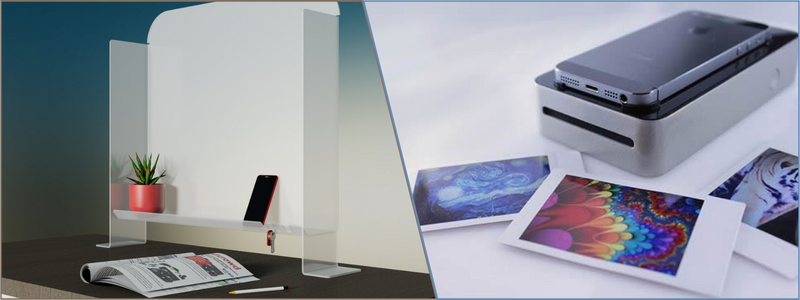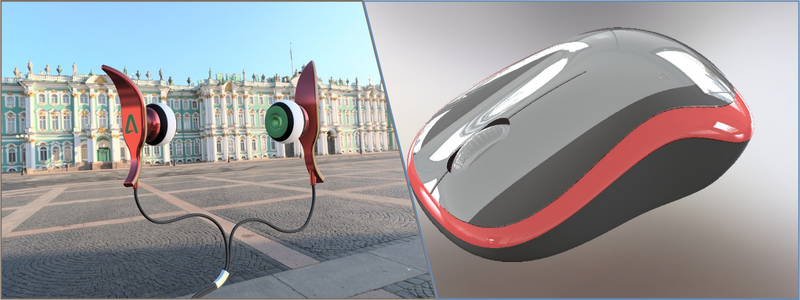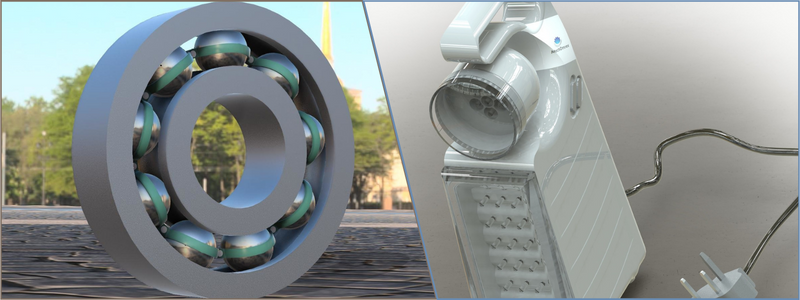This article discusses what inventors need to know when taking a new product invention design to market and new invention design services, product development, & inventors development companies. Inventors possess creativity and are visionaries who transform product ideas into profit-generating realities. However, if you ask any legitimate inventors, they will tell you without a doubt that a successful launch in the market is often easier said than done.
 Table of Contents
Table of Contents
- What inventors need to know about new product invention design before taking it to market
- It starts with self-belief
- Identify a problem worth solving
- Do basic market research before you invest money
- Develop and test the prototype
- Protect your product idea
- License or manufacture your idea (entrepreneurial inventor vs. inventor for royalties)
- Manufacturing your invention versus licensing it
- When to start marketing your product
- How Cad Crowd can assist
What inventors need to know about new product invention design before taking it to market
Pitfalls, hurdles, and roadblocks can threaten to derail and delay even the best and most ingenious of ideas. This handy guide saves you from costly mistakes that might only lead to regrets and disappointments. We will give you a quick walkthrough of what you should know to get your ideas to market successfully. Remember, you can always employ invention design help & freelance product development services.
RELATED: The product development process explained in 3 stages
It starts with self-belief
Inventing a product or coming up with a new idea is a process that requires dedication, commitment, and, most importantly, self-belief. If negative feedback quickly discourages you, or the first “no” makes you give up, it is time for you to learn to believe in yourself first. Once you have mustered enough self-belief, that is the time to hire a professional new concept design & product development services to help design and introduce your idea to the world.
Why do you need to believe in yourself, then? The “growth mindset” literally alters the chemistry of your brain. You can change and grow your brain by cultivating a growth mindset, or a mindset where your brain is most active, and combining it with hard work. When this happens, it is also easier for you to find new solutions to existing problems.
Identify a problem worth solving
The fact that you are reading this guide right now means that you already have some ideas running through your mind. You might already know that coming up with new ideas is not hard, and what’s difficult is to stick with one idea long enough and see it transform from a mere vision into reality. Coming up with a fresh idea or inventing a new product ultimately means just one thing: to solve a problem, whether that problem is yours or someone else’s. The main point here is that where there is a problem, there will always be a solution.
RELATED: 101 Inventions that changed the world in the last 100 years
The most exciting part about hiring CAD design services & 3D printing services to invent new things is identifying the one issue that you want to solve the most. You have hit upon something you can pursue if you find an unsolved problem or a way to solve it better. This doesn’t mean you should always solve a new problem each time; it only means that you should think of a solution that is uniquely yours. You can even invent a new solution for acne if you want to.
The trick is to figure out your exact solution and whether it will receive demand on a scale beyond yourself alone. It helps to determine if you can rise above the competition or enter a crowded market, such as the market for acne products. To develop a great invention, you can use your frustrations as your starting point, and this is easier when you have a pursuit, hobby, or job you have been doing for a long time. Your in-depth experience can give you a distinct insight into the everyday workings of a particular industry.
Solving your problems is not the only way to find a problem you can solve. Pay attention to other people’s frustrations: do they have common complaints? Is there something that your friends always wanted to have? Is there a product that your colleagues wished would work differently? To learn about people’s complaints, you can visit your social media accounts, read reviews, and visit forums. Keep open to all the concerns and problems people share.
RELATED: Validating your idea: is there a market for your product?

Do basic market research before you invest money
After identifying an idea you want to move forward with, you can conduct market research to validate it. Market research is essential for six principal reasons:
1. It lets you know your competition and whether the idea is already being sold
If your market research reveals the presence of competition, pay extra attention to the name of your product, its function or purpose, the materials used, the packaging, the manufacturer, and the price range. This research can be done both in-person and online. Visit the store that will likely stock your new product in the future. Take note of the products that occupy the shelves and determine the potential location of your product in that store.
2. It lowers risk
Look for patent numbers if you discover existing similar products during your research. Since not all patented products are available in stores, you need to search online to confirm that you won’t infringe on other people’s ideas. You might need to worry if you find a patent that resembles yours. The good news is that the wording of the patent can make a big difference here. If you require assistance at this point, you can seek the opinion of a qualified patent attorney.
RELATED: How much does it cost to produce a product? Bringing your invention to market
3. It allows you to see if there is interest
This involves asking people if they will buy your product or not. Be sure to invite only those who can give objective answers to ensure you get honest and unbiased feedback. Instead of asking just anyone, it is better to sample your target audience. If you wish to give someone a more in-depth explanation of your idea and protect it from potential theft, having them sign an NDA is wise.
An NDA, or non-disclosure agreement, is a legal document that states that the parties involved intend to keep the information confidential. Online surveys can also help you gauge interest. Just make sure you discuss your idea vaguely because, at this point, you probably don’t have a patent yet.
4. It gives you an idea about pricing
Your new product’s price can be between the highest and lowest prices of similar competitor products, depending on the materials you use and what bells and whistles you give. You can also calculate the price depending on the material and manufacturing services costs.
Remember these things when pricing your new product:
- Your price may affect sales if you have several products.
- Your price affects your business operations.
- Your price determines your market position.
- Your starting price will define you.
Remember that pricing your product is a strategy and an art that requires careful research.
RELATED: How to figure out how much your product design is worth
5. It identifies potential licensees
Licensees are companies that agree to sell and manufacture your new product idea. They will send you payments in royalty form, and you earn a percentage for every product sold. This is a good idea for serious inventors since licensees will do most of the legwork for you. They will produce the item, ship it, market it, assume liability, and more. The best way to look for potential licensees is to search for products similar to yours and look for the manufacturer’s name, often found in the box. List these down so you can reach out to them after patenting your idea.
6. It helps you gather important details for the sell sheet
Learning how to write a sell sheet is essential if you are serious about joining the world of inventing. A sell sheet is typically a one-page invention of your product idea. One purpose is to evoke excitement about your product among trade show attendees, licensees, or buyers.
RELATED: Product design tips: How to avoid poorly designed products
The following should be included in your sell sheet:
- Name of your product
- A statement of benefit
- Visuals such as photos or illustrations
- A list of features
- A demo video if you already have a digital sell sheet
- Necessary contact information.
After working through your initial market research, probably before you make a prototype, you can now validate your idea. While validating your idea, you must understand how to conduct market research, and you also need to list resources for market research to help you do exactly just that. The research process can help you get an idea of the specific type of customers (target audience) that your product will cater to. It affects how your product is designed, how it will be marketed, and where it will be distributed.

Many tech startups have been revealed to fail because they focused on their product alone instead of considering their potential customers. They might not have realized that a structured customer discovery process can make a big difference in identifying the critical features of an early prototype.
RELATED: 6 Ways you can use 3D printing services to create a new prototype design
One common form of premature scaling is developing a product without identifying a problem or a suitable solution by talking to actual customers. Aside from focusing on your target customer base, it is also essential to scope out your competition. Consider indirect competition if you have no direct competition because of an entirely novel idea. If it seems like your idea is a flop after going through the idea validation process, don’t worry. Some fine-tuning can help improve most ideas to make them better.
Develop and test the prototype
So, your idea is good enough, and you are already done validating. It is time to hire a professional product prototyping designer to help build your prototype, where the real fun starts. Your budget is the first thing you have to consider. What is your budget for making the physical prototype? Remember that this is not a simple 3D printed mockup of your new product. Instead, it is a real-life working design. It is important to have something solid you can test since, up until this point, you have only been working with a theory. While there is nothing wrong with this, it doesn’t give you a chance to test out several key factors:
- Does the product function as you hoped it would?
- How does the product feel? You might use a different material later.
- How do your customers react to your product?
RELATED: How to reduce painful product development costs for your company
When you prototype your idea, you have to first decide on the prototype’s purpose. Do you need it to assess your product? Is it to sell your product to potential clients? You can try adjusting your budget to suit depending on the intended function of that prototype. Avoid spending too much money in this initial phase. You can even develop a functional prototype using paper or cardboard, which is fine.
However, if you need a more professional prototype, you can look for an affordable manufacturer or hire a 3D printing design company. It is also better to carry out the initial manufacturing in small batches. The last thing you want is to fill an entire warehouse with prototypes. If you discover something wrong with the first one, you need to change it, so it wouldn’t make sense to have a mountain of prototypes.
Protect your product idea
You can start legally protecting your product if you have confirmed that there are no matching products or patents in store during the market research stage and after you have validated your idea. If you are still researching and are concerned that someone may steal your idea, you might consider filing for a patent as soon as possible. The only issue here is that the process is a bit expensive, and you might not even be sure if you have a marketable idea. At this point, you can first file for a PPA or provisional patent application. Below are several ways to protect your product idea:
RELATED: How to protect your new invention idea
1. Trademark protection
You must apply for a trademark if you want to protect the name of your new idea. Trademark protection ensures that no one else can use that same name on other similar products. A trademark also protects a phrase associated with the product or its logo. There might be no need to patent your logo or market a slogan if you are going to license your idea. The name is probably enough since the company licensee already has a team to do the rest of the work for you. It is impractical to spend extra if there is no need to do so.
To get your trademark, you can work with an attorney who will research to determine if the name, slogan, or logo is already taken. Your attorney can also help you file for trademark protection. After completing the application and receiving confirmation, you can add the symbol (™) after the name of your product. However, note that using this symbol does not guarantee that you will receive protection under trademark laws.
RELATED: How to protect your intellectual property: alternatives to patents
To enjoy complete protection, you must wait until the phrase, logo, or name you filed to protect becomes a registered trademark (®). It might take a few years, but after the process, you will get a certificate that proves you own everything.
2. NDA or non-disclosure agreement
An NDA is a legally binding mutual agreement between you and anyone you share your idea with. If your product is not patented yet, but you wish to share it with a third party, getting an NDA is recommended before you do so. You and the party that receives the NDA should sign it to make it enforceable by law. You can hire an attorney to create an NDA for you. There are also templates you can find online to create one yourself.
3. Full patent or nonprovisional patent
A patent for an invention is defined as granting the property right to an inventor. The United States Patent and Trademark Office issues patents that typically last for about 20 years in the US. In the United States, there are three types of patents: plant, design, and utility. Most people apply for utility patents, which may be awarded to anyone who discovers or invents any new and useful process, the composition of matter, the article of manufacture, the machine, or any new and useful improvement.
RELATED: A brief history of patents: patent law past and present

A design patent is given to someone who invents an ornamental, original, and new design for article manufacture. For instance, a plant patent is given to someone who discovers or invents and asexually reproduces any new and distinct plant variety. You need to hire a patent attorney to file for a complete patent. When preparing the patent document, ensure you read everything the attorney writes because you know your product better than anyone else. While this process may be expensive, it ensures 100 percent protection of your product.
4. PPA or provisional patent application
Even if you only want to license your new idea, filing for a PPA, gives you the benefit of a first-to-file date, a patent pending status, and two years to tweak and test your product. Filing for a PPA means filing for a patent within a year. A PPA filing is a reasonably affordable way to protect your product. This is partly because of the “first inventor to file” law that protects the person who files for patent protection first, even if another person had the same idea several years earlier.
RELATED: The advantages of product licensing: how to get your invention made without starting a business
Filing for a PPA is also good if you suspect it will take time to get a nonprovisional patent, and it will help ensure that no one will steal your idea. Considering that you have to fill for a full patent within a year of getting a provisional one, you must begin filing for a non-provisional patent as soon as possible because it can take six months to get complete protection.
If you have plans to approach an inventor or a licensee, you might also find that most prefer to deal with a product that already has some protection. It is recommended to discuss with your patent attorney whether you are filing for a non-provisional patent or a provisional patent.
If your attorney recommends you file for an NPA immediately, remember that you cannot tweak your product if you don’t pay additional and sometimes exorbitant fees. For people looking for licensees and inventors, or those who wish to test the market, this is the reason why the PPA is a wise option. You still have the freedom to make changes if any are required.
RELATED: 10 Productivity hacks for inventors (that really work)
License or manufacture your idea (entrepreneurial inventor vs. inventor for royalties)
While anyone can invent things and become an inventor, not everyone is cut out to be an entrepreneur-inventor. Other people prefer inventing for royalties and avoid the entire manufacturing, distribution, and marketing process. Before you decide, be sure to analyze your personality first. If you are someone skilled at sales who manages people well, can convey your idea to the rest of the world, and enjoys taking risks, you might be ready to own the process yourself.
Making this decision boils down to one fact: whether you have the money to manufacture your product idea. Read on below to learn the advantages and disadvantages of each to determine what kind of inventor you are.
RELATED: Manufacturing or product licensing? The route to selling your invention
Manufacturing your invention versus licensing it
The best thing about licensing a product is that it requires a smaller upfront investment. It can also eliminate most of the risks associated with launching an invention in the market. Manufacturing, on the other hand, requires staffing and tooling production facilities. It will require legwork to find a good manufacturer you can afford or an expensive setup if you produce your products. However, since royalties from the licensing agreements are usually a flat percentage rate, there is a linearly bound prospective growth in return on licensed inventions.
Royalties often fall between 2-10 percent of the net profit. In manufacturing, economies of scale allow exponential returns. One potential risk in licensing your new invention is the likelihood that the agreement will go wrong, which may result in a lengthy legal battle with the costs to match. You also need to consider the numbers, as it has been found that just a small number of inventors have successfully licensed their inventions. If you want to follow this route, ensure the dismal numbers don’t dissuade you. Remember that you might need to do things on your own if things don’t work out.

RELATED: Why product licensing may be the best route for you
It has been reported that almost half of the inventors who take control of production and marketing are reported to succeed. If you still want to find a license, note that you don’t need an exclusive contract. You can also license first to other companies to assess the possibility of manufacturing your product by yourself later. Companies that license an invention often have higher profit expectations because the royalties they will pay you will increase their expenses but decrease their overall profitability. Consider the complexity of your invention if you are still unsure about the route for you.
If you have a simpler design, it might be more achievable for you to conduct the manufacturing operations for its production. Alternatively, if your invention is technically complicated, it may be sensible to license it to a company equipped to manage these complexities as far as production is concerned. Remember that licensing an invention requires buy-in from the company to which your idea is licensed. There is also the chance that no interested parties will be willing to license your invention. If this is the case, you have no choice but to manufacture.
RELATED: How to sell your new product: succeeding on the market
When to start marketing your product
Another critical question that most inventors ask during the manufacturing phase is whether they should market before or after production. If you license your new invention, you might need to pitch it to potential licensees. Like other pitches, you might also need to try several companies before getting a bite. At this point, you should at least have a sell sheet, as discussed earlier.
Alternatively, if you use a design-for-assembly product design firm to manufacture and sell your invention, conduct continuous product marketing, which may require a significant expense. If you lack marketing experience or don’t want to learn, you may be better off with licensing. Take note of these things and successfully launch your new product design to market.
How Cad Crowd can assist
At Cad Crowd, we have the privilege of working with many product designers to help you take your new product invention to market. Our network of professionals has assisted some prestigious clients, including Tupperware and PepsiCo. If you’d like to get similar help, contact us today
